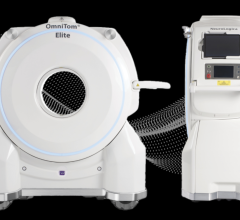
Summary of imaging findings from the SEER-Medicare linked database for patients with non-small cell lung cancer prior to receiving subsequent radiation therapy. Image created by Emily Sterbis, MD, Interventional Radiology Resident at the University of Colorado
January 23, 2023 — A study published in the January issue of The Journal of Nuclear Medicine reports that approximately one out of every two Medicare patients with non-small cell lung cancer (NSCLC) does not receive the appropriate imaging prior to receiving radiation therapy. Significant improvement in overall and cancer-specific survival rates was found in patients who had FDG PET/CT imaging—which is recommended by the National Comprehensive Cancer Network (NCCN)—compared to those who underwent CT imaging alone.
Lung cancer is the leading cause of cancer-related deaths in the United States. Imaging NSCLC with FDG PET/CT offers high sensitivity for staging and has been shown to change treatment decisions for up to 72 percent of patients with the disease. As such, NCCN guidelines recommend that all NSCLC patients with evidence of recurrence receive FDG PET/CT to evaluate for metastatic disease.
To assess the adherence to these guidelines, researchers conducted a retrospective study of patients with NSCLC in the Surveillance, Epidemiology, and End Results (SEER)-Medicare linked database. More than 5,000 NSCLC patients requiring radiation therapy were included in the study and were split into two cohorts: those who received CT imaging only and those who received FDG PET/CT imaging. Next, researchers analyzed the overall and cancer-specific survival rates of these two groups.
The analysis found that 56.3 percent of patients underwent FDG PET/CT prior to radiation therapy, while 43.6 percent had imaging with CT alone. When survival of the patients was compared over a three-year follow-up period, patients who received CT only had statistically significant decreased overall and cancer-specific survival as compared to those who received FDG PET/CT imaging.
“This research shows a clear lack of adherence to guidelines and raises important questions as to why. We believe these findings are the tip of the iceberg for guideline nonadherence. More work needs to be done in order to better understand the scope of the issue, with future work focused on interventions which ensure guideline adherence,” noted Rustain Morgan, MD, MS, nuclear radiologist at the University of Colorado in Aurora, Colorado.
For more information: www.snmmi.org


 September 12, 2024
September 12, 2024 








